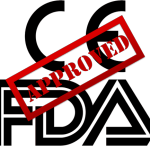The “regulatory affairs” section comprises over 200 tasks that need to be completed during the development and approval of medical devices.
Here, you will find an overview of the most essential content so that you can get your device approved quickly.
Content
On this page, you will find articles on the following topics:
- What regulatory affairs is
- Regulatory requirements
- Authorization and documentation
- Authorities, institutions, and associations
- Further topics of regulatory affairs
1. What regulatory affairs is
Regulatory affairs comprises the processes and activities that ensure that medical devices meet the regulatory requirements of the countries where they are sold. This includes
- obtaining the necessary approvals from the regulatory authorities,
- compliance with applicable regulations and standards, and
- maintaining conformity throughout the entire product life cycle until decommissioning.
The tasks of regulatory affairs also include monitoring changes to regulations and standards and communicating these changes to stakeholders within the company to ensure continuous compliance.
Regulatory affairs thus plays a crucial role in ensuring that medical devices are safe, effective, and comply with legal requirements.
Further information
Refer also to the article on regulatory affairs managers’ tasks, competencies, and earning potential. This includes the task of developing a regulatory strategy.
2. Regulatory requirements
a) Germany
| Laws |
Medical Devices Law (no longer valid)
Medical Devices Implementation Act MPDG |
| National regulations |
Medical Device Operator Ordinance (Medizinprodukte-Betreiberverordnung – MPBetreibV)
Medical Device User Notification and Information Ordinance (Medizinprodukte-Anwendermelde- und Informationsverordnung – MPAMIV) |
b) Europe
c) USA
d) Other markets
3. Approval and documentation
a) Approval
Find more information on international approval
b) Qualification and classification (How should my device be classified?)
c) Technical documentation (What do I need to document for each device?)
d) Quality management (What should your company fulfill?)
Quality management is not usually the responsibility of regulatory affairs. Nevertheless, we have listed some important articles for you.
e) Regulatory Roles
There are several expert articles on regulatory roles:
4. Authorities, institutions, and associations
a) Germany
b) Europe
c) International
| IMDRF: International Medical Device Regulators Forum |
5. Regulatory affairs: Further topics
The tasks of Regulatory Affairs also include finding and eliminating deviations and non-conformities. The (emergency) elimination is called remediation.
Note the advantages and disadvantages of Regulatory Information Management Systems (RIMS) and their role in manufacturers’ digital transformation.
Part of the tasks of regulatory affairs is regulatory intelligence.
Do you need support?
Do you still have questions, for example, about the approval of your devices? Then, take advantage of our free micro-consulting service.
If you would like support in developing and “approving” your medical devices in compliance with the law, contact us right away. The Johner Institute team will be happy to help!
For manufacturers, the answer to whether and when clinical studies are necessary when using artificial intelligence in medical devices is relevant. After all, the duration and cost of bringing these devices to market depend on this. The good news in advance: there are cases where manufacturers can avoid clinical studies for devices with AI. This…
Details
In order to evaluate the biocompatibility of standard materials, medical device manufacturers can, in most cases, avoid animal testing. In recent years, the Johner Institute had always succeeded in showing alternatives to animal testing, even when authorities and notified bodies demanded them. Learn here how you can contribute to animal welfare, save money, and bring…
Details
A German medical technology industry analysis from 2020 estimated the market for medical devices in South Korea at USD 6.7 billion. Due to an annual growth rate of imports of (estimated) 10% and the increasing aging of the population with a simultaneous increase in basic medical care, the South Korean market is expected to grow…
Details
Only through clinical evidence – real evidence – can manufacturers prove their medical devices’ safety, performance, and benefit. But when is proof valid enough? In other words, when is there sufficient clinical evidence for authorities and notified bodies to accept? This article answers the questions and provides a compact introduction to the topic of “clinical…
Details
EUDAMED is the European database for medical devices. However, it is not only used to manage medical devices. The Medical Device Regulation (MDR) relies on EUDAMED and determines which requirements must be stored in this database. These regulations affect the work of manufacturers and also the work of authorities and notified bodies.
Details
This article describes when and why manufacturers must affix a CE mark, what is meant by CE marking, and what manufacturers must do up to that point.
Both the MDR and the IVDR require a “person responsible for regulatory compliance” (PRRC). Some people also call them the “article 15 person” (after the corresponding articles in the two EU regulations) or the “qualified person”. The terms “person responsible for compliance with regulatory requirements” (abbreviated to “person responsible”) and “qualified or competent person” are used in German. The “person…
Details
PMCF studies are studies that manufacturers use as part of Post-Market Clinical Follow-up (PMCF) to continuously demonstrate compliance of their medical devices. Manufacturers do not always need to conduct studies to meet PMCF requirements. And not all types of PMCF studies are subject to MDR requirements. This article compactly summarizes the regulatory requirements in the…
Details
Medical device manufacturers have high expectations of Regulatory Information Management Systems (RIMS). The costs and efforts involved are immense and usually much higher than expected. The benefits, on the other hand, are not clear. This article will give you some hints,
Details
Many companies consider Regulatory Intelligence so important that they create their own roles and departments for it. This article clarifies what Regulatory Intelligence is, how companies can benefit from it, and where tools can provide support.
Details
